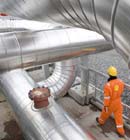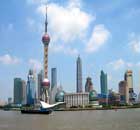Society
Ruins of ancient city found in east China
(Xinhua)
Updated: 2010-03-24 14:48
 |
Large Medium Small |
NANCHANG - Archeologists in east China's Jiangxi Province have found ruins of an ancient city that dates back to the Eastern Han Dynasty about 2,000 years ago.
The site, located on a deserted mesa atop a hill near Fujiacun Village in Fengcheng City, covers about 18,000 square meters and is surrounded by a moat, the provincial institute of archeology said in a press release.
| ||||
About 30 meters of the city wall was still standing on its west and pieces of broken tiles scattered on the ground, it said
Some villagers claimed they had seen stone implements at the site in the past, but none was found during a field trip by archeologists this week.
Researchers said the implements might have entered into private collection.
The ruins, however, are believed to provide new clues for China's research on the city structure of the Eastern Han Dynasty (24-220 AD), two to four centuries after Emperor Qinshihuang united China for the first time.











